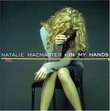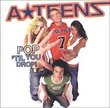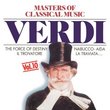| All Artists: Franz Liszt, Oliver von Dohnanyi, Czecho-Slovak Radio Symphony Orchestra (Bratislava), CSR Symphony Orchestra (Bratislava), Joseph Banowetz Title: Liszt: Piano Concertos Nos. 1 & 2; Totentanz Members Wishing: 0 Total Copies: 0 Label: Naxos Release Date: 2/15/1994 Genres: Dance & Electronic, Classical Styles: Forms & Genres, Concertos, Instruments, Keyboard Number of Discs: 1 SwapaCD Credits: 1 UPC: 730099518727 |
Search - Franz Liszt, Oliver von Dohnanyi, Czecho-Slovak Radio Symphony Orchestra (Bratislava) :: Liszt: Piano Concertos Nos. 1 & 2; Totentanz
 | Franz Liszt, Oliver von Dohnanyi, Czecho-Slovak Radio Symphony Orchestra (Bratislava) Liszt: Piano Concertos Nos. 1 & 2; Totentanz Genres: Dance & Electronic, Classical
|
Larger Image |
CD DetailsSimilarly Requested CDs
|
CD ReviewsThis is an excellent recording for the price M. J MUIR | United Kingdom | 02/10/2002 (5 out of 5 stars) "I also own this piece played by the more famous Misha Dichter, Andre Previn conducting, and the Pittsburgh Symphony orchestra.In all honesty there is nothing to choose between the two of them." Adequate Performance, Primitive Sound Leslie Richford | Selsingen, Lower Saxony | 12/17/2004 (2 out of 5 stars) "Liszt?s Piano Concerto No. 1 is an exciting piece of music based on a simple repeated theme that is almost as ?catchy? as the ?fate? theme of Beethoven?s Fifth. It was first performed in 1855 with Liszt himself as the soloist and none other than Héctor Berlioz as conductor. Although the last movement has been criticized for being a banal show of virtuosity, the whole concerto is eminently worth knowing and treasuring. Liszt?s Piano Concerto No. 2, first performed two years later, is rather different, the four movements running into each other and there being more lyrical passage-work, including solos for horn and cello, before the ?Marziale, un poco meno allegro? closes the work in typically virtuoso fashion. The ?Totentanz? (Dance of Death) was written in 1849 and consists basically of a series of rather bizarre variations on the ?Dies Irae? sequence from the Gregorian requiem. With these three pieces, the CD contains most of Liszt?s work for piano and orchestra.
As far as the performance goes, I cannot make comparisons, as no other recording of these works is currently available to me, but I found the censure of a fellow Amazonite a little too harsh: there is, indeed, nothing spectacular about these performances, but they seem to me to be adequate. What does impair their enjoyment is the rather primitive stereo sound which takes a lot of getting used to and cannot really convince, even on top-class stereo equipment: the orchestra seems divided in two halves, left and right, while the piano fills the space between. The piano is definitely in the limelight, but occasionally gets drowned by the orchestra, while at other moments it seems to be much louder than the entire collection of instruments. (I wonder how big the orchestra actually was; as usual, Naxos offers no information on this subject.) The solo instruments of the orchestra are obviously given special microphones and jump out at you. I found listening over high-quality headphones to be more satisfactory than in front of loudspeakers, but even with all the ?tricks? a stereo fan can use to improve the quality, the whole CD still sounded rather amateurishly recorded. " |

 Track Listings (9) - Disc #1
Track Listings (9) - Disc #1








